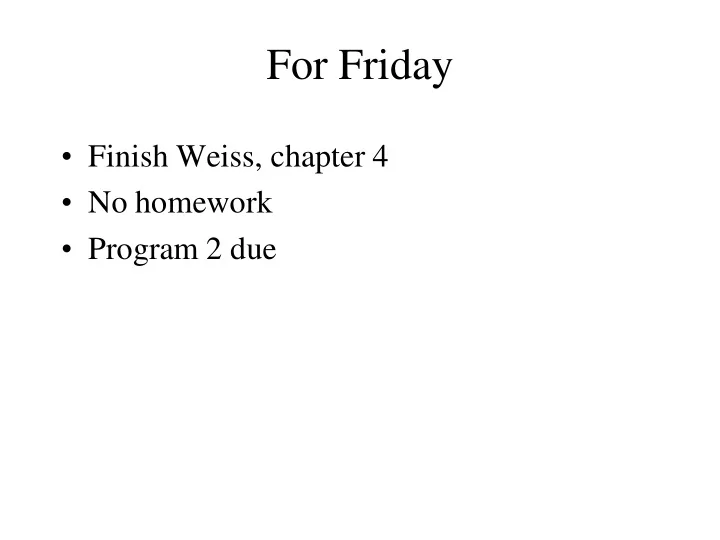

For Friday • Finish Weiss, chapter 4 • No homework • Program 2 due
Programming Assignment 2 • Any questions?
Binary Search Tree Operations • Search – Time Complexity • Insert – Time Complexity • Deletion – Of a leaf – Of a node with one non-empty subtree – Of a node with two non-empty subtrees – Time Complexity • Output Ordered List • FindMin • Find Max
Problem With Binary Trees • Basic operations are O(h) • What is the height? • Best case -- • Worst case --
Solution • How we can solve the performance problems of binary search trees?
AVL Search Trees • An AVL tree is a binary tree such that: – the difference between the heights of the left subtree and the right subtree is no more than one – the left subtree and the right subtree are AVL trees • An AVL search tree is simply a binary search tree which is also an AVL tree
Maintaining the AVL Properties • Each node has a balance factor associated with it -- 0, 1, or -1 • If the nodes subtrees have equal heights, the balance factor is 0 • If the right subtree has greater height (by 1) the balance factor is -1 • If the left subtree has greater height (by 1) the balance factor is 1
Binary Search Tree Operations • Search – Time Complexity • Insertion – May have to rotate – Time Complexity • Deletion – May have to rotate up to log(n) times – Time Complexity
Splay Trees • Interested in the cost of a sequence of search operations rather than the cost of a single search. • We want to make sure that the amortized cost of M search operations is M log N.
Basic Idea • When we find a node, we’re going to rotate it to the top in a way that helps to balance the tree if it is currently unbalanced.
Cases • Found node has no grandparent: rotate node and root • Found node has a grandparent: – zig-zig case (parent is same side of grandparent that node is of root): rotate node and grandparent – zig- zag case (node’s value is in -between value of parent and grandparent): do a standard AVL double rotation
Comparison • Splay trees and AVL trees
Recommend
More recommend